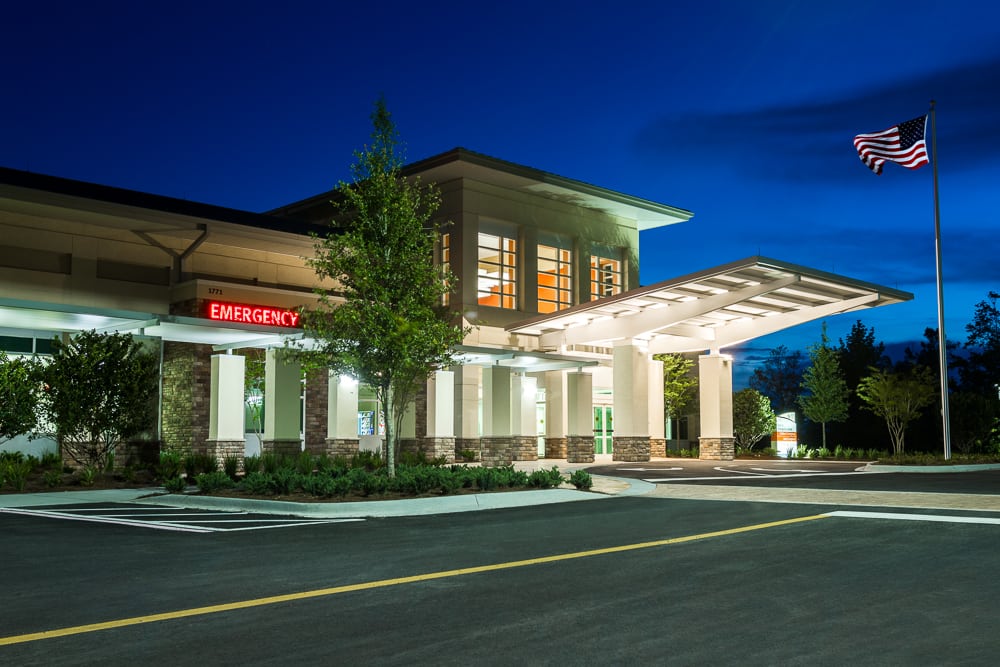When a child is injured, a parent’s immediate instinct is to get help as quickly as possible without always thinking about where the child should go to receive the care he or she needs. Both are important decisions, but one can be made well before an emergency even happens.
If your child needs urgent medical care, choosing an ER that’s staffed by pediatric emergency medicine physicians, nurses, respiratory therapists and other professionals who specialize in treating kids can make a big difference – sometimes even a life-or-death one.
“Because our physicians have received extensive training in both pediatrics and pediatric emergency medicine, and because the nursing staff is specially trained and experienced in recognizing those children who need to be seen quickly, we can recognize the nuances of a child’s condition and provide the care he or she needs quickly and appropriately,” said Anthony Pohlgeers, MD, pediatric emergency medicine physician for Wolfson Children’s Emergency Centers. “Not all ERs are experienced enough or equipped to do that.”
Wolfson Children’s Hospital has six Emergency Centers, one in San Marco/Jacksonville, adjacent to the adult Emergency Center on the Baptist Medical Center Jacksonville campus, Baptist Clay Medical Campus in Fleming Island, North Jacksonville, Oakleaf, Baptist South, and the Town Center. In addition to pediatric-trained staff, the instruments and imaging tests used also are kid-sized and kid-friendly.
You know your child better than anyone else. If you think something’s not right, trust your gut! If you decide to make a trip to the ER, there are some things to know before you come. Wolfson makes it easy with 9 Things to Know Before Taking Your Child to the ER.
Read More
One Family’s Story
Clay County parents Amy and Justin had only recently moved to the area with their twin boys Callen and Jack when Callen tripped over some toys at home and hit his head hard. Amy knew right away something wasn’t right when he turned pale and lethargic, but when he began vomiting, she suspected he had a concussion and took him to a nearby ER. “It was seven minutes from my house,” she said.
Amy spent more than 90 minutes trying to keep Callen awake while waiting for him to be seen, her worry ever-increasing. When they were called back, Amy said, he was taken to get a CT scan.
“The doctor there said he needed to be transferred to Wolfson Children’s Hospital for further evaluation, and he’d probably need an overnight stay,” she remembered.
The ER called the Kids Kare Mobile ICU, whose pediatric critical care nurse, respiratory therapist, and EMT team transported Callen to the only children’s hospital in Northeast Florida: Wolfson Children’s Hospital. Double board-certified pediatric emergency medicine physician Hans-David R. Hartwig, MD, met them at the entrance to the Wolfson Children’s ER. After looking at Callen’s CT scan, he confirmed the toddler had a slight skull fracture but assured Amy that there was no brain damage or bleeding and that it would heal on its own.
“He told us that if we’d have come to one of the Wolfson Children’s ERs first, we would have found out in much less time that Callen just needed to be observed for a few hours,” said Amy. “I felt very comfortable going home because I knew we had spoken to the experts.”
Callen also would have received a CT scan calibrated with special software just for kids to lessen radiation, provided by pediatric-skilled radiologic technologists. The experience taught them a valuable lesson about the difference between a regular ER that might be a little closer but is not the same as a Wolfson Children’s Hospital-affiliated pediatric ER, one staffed by pediatric emergency medicine physicians, ER doctors with significant pediatric experience, and nurses who specialize in treating kids with urgent medical issues.
What’s a Pediatric Emergency?
When it comes to knowing if an injury constitutes a real medical emergency, that decision may be more difficult for a parent. Dr. Pohlgeers said it’s easy for moms and dads to make choices that they think are the right ones at the time because it’s not always easy to think clearly in the heat of the moment. Most parents have good instincts, he added, but if the choice is made to head to the hospital, there are a few things to keep in mind.
“I tell parents if they’re in a situation where they feel uncomfortable and nervous about their child’s injury or condition, it’s not a good idea to get behind the wheel of a car,” said Dr. Pohlgeers. “That’s what 911 is for – these trained emergency medical technicians deliver care quickly, usually within 10 minutes of your call, and get them to the hospital sooner than you could get them there yourselves in most cases.”
According to Dr. Pohlgeers, the top reasons children are rushed to the ER are for respiratory problems (asthma, coughing, difficulty breathing – too fast, too hard, making funny noises); infectious diseases that cause high fevers or lethargy and loss of consciousness; severe headaches and seizures.
Where it gets tricky is that some illnesses or injuries seem worse than they actually are, while others can be very serious but so subtle that they don’t raise red flags right away. How is a parent to know?
“Trust your gut,” said Candice Ramesar. MHA, BSN, RN, NEA-BC, director of the Wolfson Children’s ERs and the KidsKare Mobile ICU. “If you think it’s an emergency, don’t hesitate, and just call 911. You know your child best.”
For Callen’s mom, where to take any of her children should they need emergency care in the future is a decision she’s already made.
“With two little boys and another one on the way, we probably have more ER visits in our future,” said Amy. “With what we learned from this experience, we know it’s worth the extra drive to a Wolfson Children’s ER. You can feel confident that your children are getting the best pediatric care in the area.”
The best indicators of a medical emergency include:
- A wound that won’t stop bleeding
- Breathing problems like shortness of breath or difficulty inhaling/exhaling
- Head trauma that causes loss of consciousness, disorientation, sleepiness or visual disturbances
- Suspicion of a medication overdose or the possibility of poisoning
- Faster-than-normal heartbeat that doesn’t slow with rest
- Stiff neck accompanied by a fever and disorientation
Source: kidshealth.org
Having access to Wolfson Children’s ER wait times helps parents feel at ease during a stressful time. To see wait times for all six centers, visit wolfsonchildrens.org/ER.
Wolfson ER Centers
Have the Best, Safest Summer Ever
Play it safe and avoid the pitfalls that lead to an ER trip by downloading this free Summer Safety Guide. Make this the best summer ever, and steer clear of summer bummers!


















